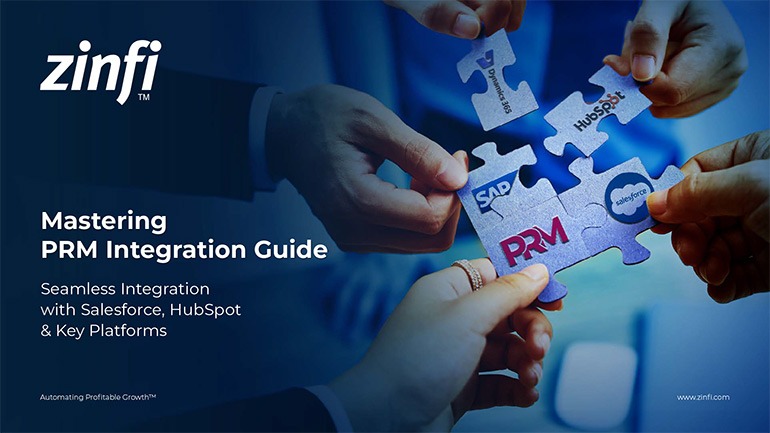Glossary - How to - Channel Partner Relationship Management
How to Implement Channel Partner Relationship Management?
Introduction
Defining Channel Partner Relationship Management
Channel Partner Relationship Management (CPRM) refers to strategies, tools, and practices businesses use to manage and optimize relationships with their channel partners. These partners include resellers, distributors, agents, and other third-party organizations that help sell or market a company’s products and services. Effective CPRM ensures seamless collaboration, clear communication, and mutual business growth.
Businesses in interconnected marketplaces rely on channel partners to expand their reach and enhance revenue generation. However, effective management of multiple partners requires structured processes, automation, and a clear strategy to maintain engagement and productivity.
The Role of CPRM in Partner Management Automation
CPRM is a critical component of Partner Relationship Management (PRM) as it involves using software platforms and automated systems to streamline partner engagement. PRM solutions help organizations manage partner onboarding, training, incentives, and performance tracking, ensuring a smooth partner experience. Automated CPRM fosters transparency, optimizes workflows, and enhances partner loyalty, improving sales performance and long-term success.
Key Takeaways:
Establish Clear Partner Onboarding and Training Processes
A structured onboarding process ensures new partners understand the goals, products, and expectations. Key elements of successful onboarding include:
- A comprehensive partner portal with access to training resources
- Regular webinars and workshops to educate partners on products and services
- Clear guidelines and contracts outlining mutual responsibilities
Proper training helps partners sell more effectively, increasing engagement and revenue potential.
Implement a Robust Partner Communication Strategy
Effective communication is the backbone of successful CPRM. Companies should leverage multiple channels, such as:
- Email newsletters and updates
- Webinars and video conferencing
- Dedicated partner relationship managers
- Collaboration tools like Slack or Microsoft Teams
Maintaining open lines of communication fosters trust and ensures that partners remain informed about product updates, market trends, and promotional opportunities.
Utilize Data-Driven Performance Management
Tracking and analyzing partner performance helps businesses identify strengths and areas for improvement achieved through:
- Key Performance Indicators (KPIs) like sales revenue, lead conversion rates, and customer satisfaction scores
- Performance dashboards that provide real-time insights
- Regular performance reviews and feedback sessions
By utilizing data-driven insights, companies can reward high-performing partners and provide additional support where needed.
Offer Incentives and Rewards for Partner Engagement
A strong incentive program motivates partners to prioritize your brand over competitors. Consider implementing:
- Tiered commission structures
- Exclusive marketing funds (MDF – Market Development Funds)
- Recognition programs and partner awards
- Access to co-branded marketing resources
Customized incentive programs help maintain engagement and encourage partners to meet sales targets.
Automate Partner Relationship Management with PRM Software
Leveraging PRM software simplifies partner relationship management through automation. Key benefits include:
- Centralized partner portals with self-service resources
- Automated contract management and deal registration
- AI-driven analytics for predictive insights
- Integration with CRM and ERP systems for seamless data sharing
Automation reduces manual workload, improves efficiency, and allows businesses to scale their channel partner programs.
Summary of Key Takeaways:
- A structured onboarding and training process ensures partners are well-equipped to sell effectively.
- Effective communication strategies foster trust and engagement, including newsletters, webinars, and collaboration tools.
- Data-driven performance tracking allows businesses to reward top-performing partners and optimize weaker areas.
- Incentives and rewards encourage partner commitment and align efforts with company goals.
- PRM software and automation improve efficiency, scalability, and overall partner relationship management success.
Industry-Specific Applications of CPRM:
- Automotive Manufacturing: In the automotive sector, CPRM helps manufacturers coordinate with dealerships, distributors, and suppliers. By implementing automated partner management systems, automotive companies can streamline supply chains, enhance customer service, and boost brand loyalty.
- Consumer Electronics: Electronics manufacturers rely on distributors and resellers to reach global markets. Effective CPRM ensures partners receive the latest product training, marketing materials, and performance incentives to drive sales and market penetration.
- Energy Production: Energy companies collaborate with partners for renewable energy distribution, installation, and maintenance. CPRM solutions help streamline compliance management, partner onboarding, and incentive programs to promote clean energy adoption.
- Financial Services: Banks and insurance companies work with affiliates and brokers to expand their services. A well-structured CPRM strategy helps financial institutions manage commission structures, regulatory compliance, and partner training.
- Food and Beverage: Franchises and distributors play a key role in the food and beverage industry. Effective CPRM ensures consistency in product distribution, marketing campaigns, and brand messaging across multiple partners and locations.
- Healthcare Services: Medical device manufacturers and pharmaceutical companies depend on distributors to supply products to hospitals and clinics. A strong CPRM framework ensures regulatory compliance, product training, and seamless supply chain operations.
- Information Technology: Software and hardware vendors use CPRM to manage reseller networks and system integrators. PRM tools help IT firms automate deal registration, lead distribution, and revenue-sharing agreements for improved partner collaboration.
- Pharmaceutical Development: Pharmaceutical firms require managing partnerships with research organizations, regulatory bodies, and distributors. CPRM solutions streamline compliance tracking, sales performance monitoring, and partnership governance.
- Retail Industry: Retail brands work with franchisees, wholesalers, and online marketplaces. CPRM ensures that partners follow brand guidelines, maintain pricing consistency, and execute joint marketing initiatives effectively.
- Telecommunications: Telecom providers rely on service resellers and distribution networks to reach customers. CPRM tools help telecom firms manage partner commissions, customer support training, and service-level agreements.
Conclusion:
Implementing strong Channel Partner Relationship Management strategies is essential for businesses that depend on external partners to drive growth. Organizations can build lasting relationships that enhance revenue and market reach by focusing on structured onboarding, effective communication, performance tracking, incentives, and automation.
Investing in PRM software and automation tools helps streamline partner engagement, improve operational efficiency, and ensure consistent brand experience. A robust CPRM strategy can lead to long-term business success in automotive, IT, healthcare, or telecommunications.
Associated Keywords:
- Channel Partner Engagement Strategies
- Best Practices for Partner Relationship Management
- How to Improve Channel Partner Collaboration















